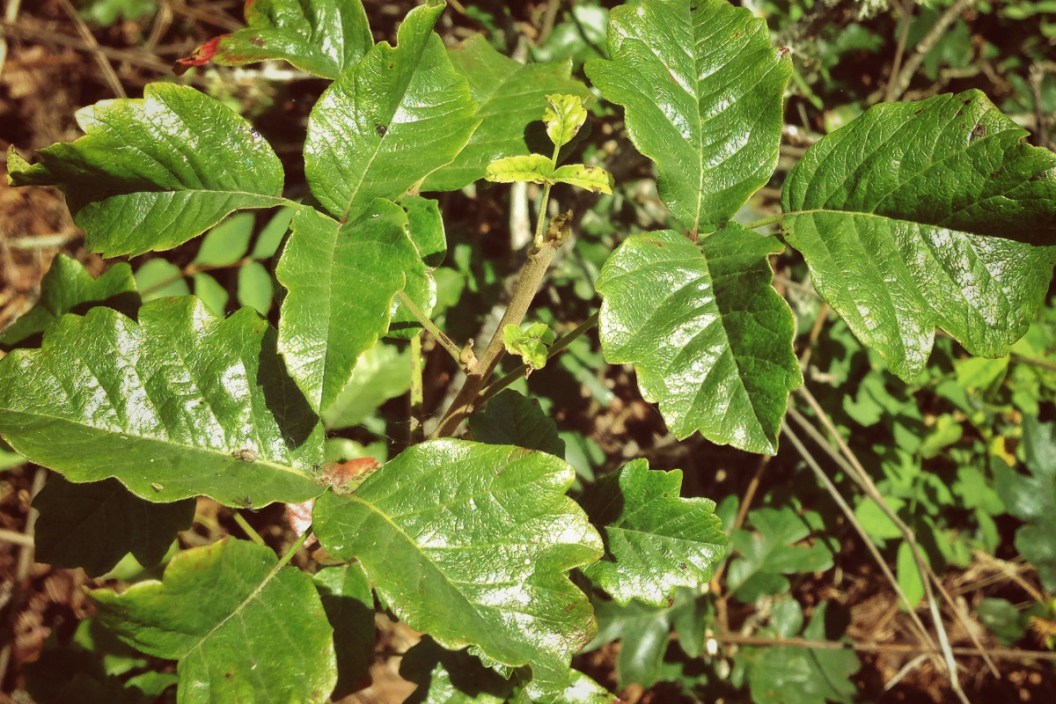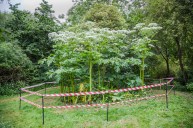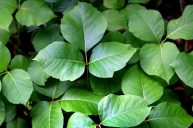I don't recall too many bouts with poison ivy in my outdoor adventures, but the ones that I can recall were not pleasant to say the least. Most people who have ever had contact with this toxic plant can probably relate. Pure discomfort and unrelenting irritation would be the best way to describe a bout of poison ivy, and while it seems that some folks are more susceptible to poison ivy than others, everybody would prefer to stay away from it. I can vividly remember my two worst cases. One instance was when I was hanging stands for the upcoming archery deer season in Arkansas. It was late August and incredibly green. I unknowingly pulled down vines around my stand and was greeted a few hours later with red rashes up and down both arms. Needless to say, it was terrible. The other time was while archery deer hunting in eastern Missouri in September. I climbed a tree that was covered in it. Before the hunt was over, I had already developed rashes on my hand and in between my fingers. That was probably the worst case I've had. If you spend time outdoors, especially in the summer and early fall, you will likely find yourself around it at some point. While poison ivy is mild to most, nobody wants any part of it because of how uncomfortable a skin irritation it creates. Most outdoorsmen can spot poison ivy and can therefore avoid it. Unfortunately, there is more out there than just poison ivy. Here are just three examples of nasty plants that are just as bad, or even worse in some instances.
Poison Oak

Getty Images: nathanphoto
Poison Oak is very similar to poison ivy in several ways but has its own place in the world of plants you don't want to mess with. Poison oak grows as a shrub and can reach heights of about three feet. The green leaves are lobed and share similarities with an oak tree leaf (hence the name). Like poison ivy it comes in leaves of three. Keep in mind the old saying here: "Leaves of three, let it be." However, the shape and color of poison oak allow it to be differentiated from poison ivy. Poison oak can be found across the United States.
Symptoms of poison oak contact resemble that of poison ivy. They're most often characterized by red, blistering, itchy rashes. Sometimes there is a delayed reaction after contact with poison oak. Symptoms could show up in a time range of one day to one week after contact. As far as treatment goes, washing the area with a degreasing soap helps keep the oils from spreading, but topical ointments will help with already developed rashes.
Poison Sumac

Wikimedia Commons: FreeKee
Another widespread, poisonous plant you want to avoid would be Poison Sumac. It grows as a mid-sized tree and is found all across the eastern and southern United states, putting it in heavily used areas by outdoorsmen. The parts of the plant include a red stem and a long, slender, smooth-edged leaf. Sumac Stems mostly appear with multiple leaves per stem and often exceed three.
Contact with the oil of Poison Sumac will leave you with a burning, itchy rash that is often more severe than Poison Ivy or Poison Oak. The oil that causes the reaction is comparable to the poisonous oil of other plants. In fact, some people who get either sumac or oak may just assume they wandered into poison ivy. The good news here is the treatments are basically the same. Cleaning the area thoroughly and making sure the oil doesn't spread is important. Topical ointments should help with the rash.
Wild Parsnips

Getty Images: Mieszko9
When it comes to poisonous plants, parsnips are rarely the first one to come to anybody's mind. Wild Parsnips, also known as "wild carrots," are a member of the parsley family and are very poisonous. It is found throughout North America and can grow to five feet. Parsnips usually have yellow or white umbrella-shaped clusters. It is more commonly found in open areas with lots of sunlight like pastures and fields.
The mechanism of poison is different from that of the other previously discussed plants. The poisonous agent in Wild Parsnip sap causes phytophotodermatitis, which basically means the affected areas of your skin become increasingly sensitive to sunlight. This increased sensitivity causes your skin to burn and blister in direct sunlight after a few hours of exposure. After contact, keep the affected areas out of direct sunlight and treat with over-the-counter burn ointments and ice.
The bottom line is you don't want contact with any of these plants when you are outdoors. They can make your day go from fun to miserable in a hurry. The best way to protect yourself is to study up on the plants that grow in your area and go into the woods armed with the knowledge needed to spot and avoid them. Once you do that, it will make your outdoor adventures a lot safer and more fun.
READ MORE: 10 UNUSUAL HOME REMEDIES FOR POISON IVY THAT ACTUALLY WORK




